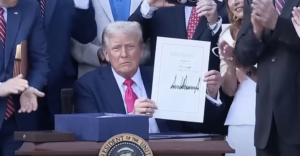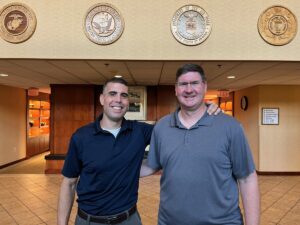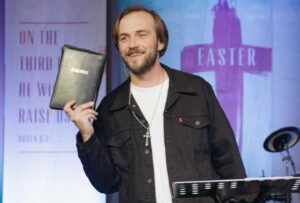
Have you ever played cerebral torment? Try this one:
Which is correct: nine plus seven is fifteen, or nine plus seven are fifteen?
Okay, let's try another: by removing six letters from the following you are left with one word (English only, please!). What is the word?
B S I A X N L A E T N T A E S R S
Give up? Here are the answers: First, nine plus seven equals sixteen, not fifteen! Next, remove the letters "SIX LETTERS" and the remaining word is "BANANAS."
Most people don't get these right because they rush to discover the answer before seriously engaging the question. Here's another:
Historically, what has God used more than any other approach, except one-on-one personal evangelism, to reach the lost?
The answer: Mass evangelism, which has endured as a timeless method ordained by God in Scripture and used with incredible effectiveness throughout history. In fact, itinerant evangelists can be found from the New Testament (Eph. 4:11) until today.
The most effective times of evangelism in history also featured some of the most effective mass evangelists. In different eras, different means were used to proclaim the Gospel: George Whitefield, John Wesley and others preached the Gospel in the fields with enormous success. At first, they struggled with this approach because it was so non-traditional. Shubal Stearns, noted Baptist leader of the Sandy Creek Church, utilized protracted meetings (extended evangelistic services).
Charles Finney also utilized protracted meetings, at first extending services over several nights spontaneously after the fire of God fell in revival. In Rochester, New York, Finney preached 98 sermons from September 10, 1830, to March 6, 1831, in what one historian called "the camp meeting brought to town."1 Later, in the nineteenth century, D. L. Moody popularized the idea of a city-wide crusade. This method was developed by later evangelists including Wilbur Chapman, R. A. Torrey, Gypsey Smith, Mordecai Hamm, Billy Sunday, and Billy Graham. Whether it was the specific approach of field preaching, camp meetings, or citywide crusades, "For every age God has a program of evangelism."2
In George Whitefield's day, mass evangelism practiced in the fields was rejected by most church leaders in part because it was an innovation. Today, some church leaders have ceased to hold evangelistic meetings in part because they are considered too traditional!
So why should a pastor consider mass evangelism, or using evangelists?
• Mass evangelism and evangelists are biblical concepts. Both were God's idea. That is not to say that churches which fail to conduct annual or semiannual evangelistic campaigns are bad; it is to suggest that some have given up on the method prematurely. Unfortunately, some evangelists have given evangelistic meetings and evangelists a bad reputation. But there are many godly, effective men who are gifted as harvesters.
• Mass evangelism reminds believers that people are lost and must be reached. In a day when tolerance is a virtue and conviction a vice, too many believers have forgotten how lost they are apart from Christ. Gospel preaching speaks not only to lost people; Christians also need to hear the "old, old story."
• Mass evangelism still works. We can preach the timeless Gospel in a changing world. The largest services in the history of Billy Graham's crusades are happening right now — on youth night!
Some of my most precious memories are of evangelistic services: the father of a close friend coming to Christ in deep brokenness and tears; a married couple from different church backgrounds who moved from a religious system to a relationship with God; one fourth of a junior high school football team coming to Christ in one night; a church transformed by witnessing the power of God changing lives.
I remember the first time, as a young pastor, when I used such an itinerant evangelist. We prepared diligently in our little church, using our Home Mission Board's material. We prayed all night one Friday. We went out into the community again and again to share the love of Christ. And God blessed! More people came to Christ and were baptized than had been reached for the past eight years.
Don't give up the method; it will work for our churches in our day.
1 Winthrop Hudson, Religion in America (New York: Charles Scribner's Sons, 1981), 143
2 Arthur Skevington Wood, John Wesley: The Burning Heart (Grand Rapids: Eerdmans, 1967), 97
Revival Evangelism Works
A recent study of evangelistic Southern Baptist churches revealed that almost one-half of evangelistic Southern Baptist churches use evangelistic meetings, or "revival evangelism," regularly. Thom Rainer, in his book Effective Evangelistic Churches, explains how the method has been so successful.
• First, extensive planning is employed. Hard work and high expectancy mark these churches.
• Second, prayer is not on the periphery in these efforts.
• Third, these churches generally use vocational evangelists.
For further information about vocational evangelists, call 501-369-4260.














